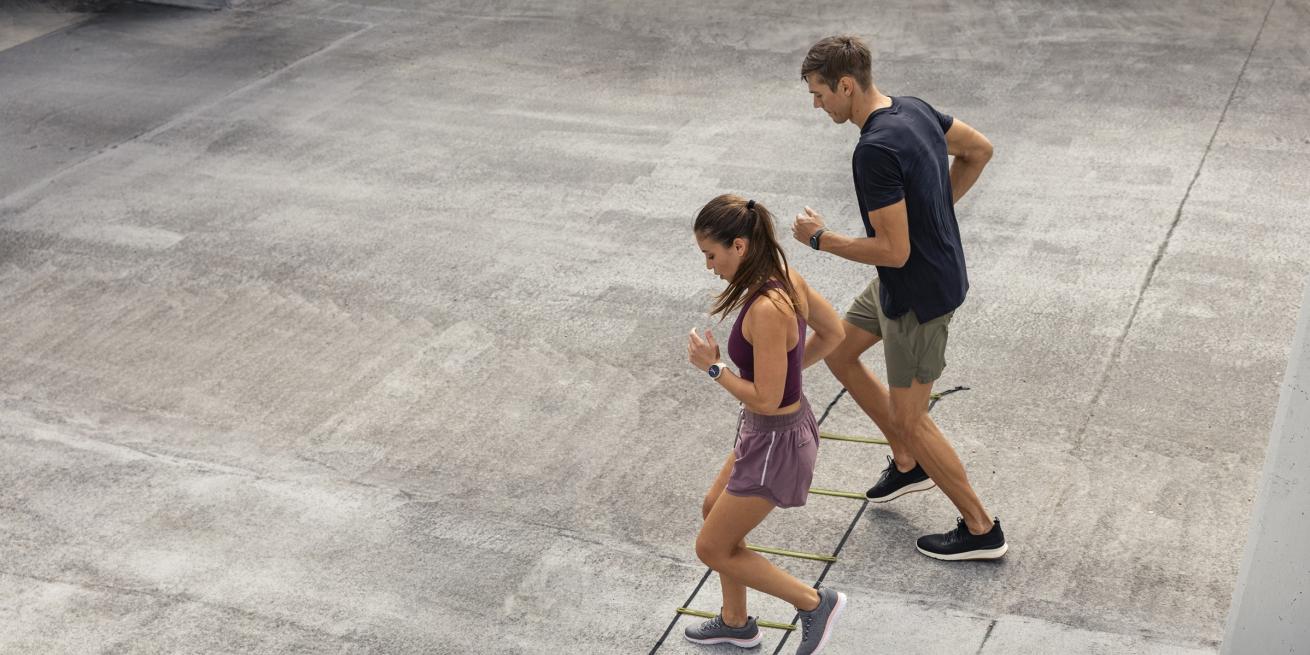Summer is the season of adventure. Longer days mean more opportunities to get outside and explore, train for a competition or simply enjoy time with friends and family. However, it’s not all fun and games. High temperatures and humidity – in addition to the UV index – can be challenging and, at times, dangerous variables. By measuring different health and environmental inputs with devices like smartwatches, you can make safe and smart decisions. To maximize your warm weather activities, Garmin suggests the following tips:
- Prioritize Mornings and Evenings
Heat acclimatization, the process of the body adapting to increased temperatures, can take several weeks depending on fitness level and exposure.1 Planning your walks, runs or bike rides at the beginning or end of the day allows you to acclimate in cooler weather and a lower UV index versus when the sun is overhead. Remember, always wear high-visibility gear when exercising in low-light conditions. - Take Frequent Breaks
Your muscles, heart and lungs all work harder in warmer temperatures and higher humidity levels.2 Scheduling regular breaks for fluid intake is essential to remain hydrated throughout the course of your activity. And checking heart rate zones is a useful way to determine whether an unplanned break is necessary, as well as how long the break should last. - Monitor Key Vitals
Sometimes it can be difficult to assess how hard you’re working based on feeling alone. Tracking certain health metrics can provide you with the information to make data-informed decisions. For instance, heart rate – often quantified in beats per minute (bpm) – can be a useful tool for identifying heat stress.3 Respiration rate also changes in high heat situations as the body attempts to cool itself. - Add Indoor Activities
There are days when it simply isn’t safe to be outside for long amounts of time. In those instances, there are myriad indoor options to choose from. Cardio-focused activities include pickleball, swimming, cycling on a stationary bike or playing basketball. Often available at community centers, less intense possibilities – like yoga or table tennis – mean there are opportunities for all ages and fitness levels. - Don’t Forget Rest Days
Due to the additional exertion necessitated by warm weather, rest days become more important than ever.4 Understanding how your “body battery” recharges can help ensure adequate time for recovery. Activity duration and intensity are important factors, but so is sleep quality. Analyzing these variables in tandem creates a nuanced understanding of physical fatigue and fitness.
Whether you are competing in a triathlon, hiking on vacation or planning fun outdoor activities for your kids, summer is an incredible time to be out in nature. By focusing on recovery, regularly hydrating and taking prudent precautions based on health data, you’ll be prepared to enjoy your time to the fullest, even in high heat and humidity.
1. Centers for Disease Control and Prevention. Acclimatization. 2024.
2. Mayo Clinic Health System. Effects of hot weather, humidity on blood pressure, heart. 2023.
3. National Library of Medicine. Heat stress monitoring based on heart rate measurements. 2020.
4. Johns Hopkins Medicine. Exercise-Related Heat Exhaustion.






